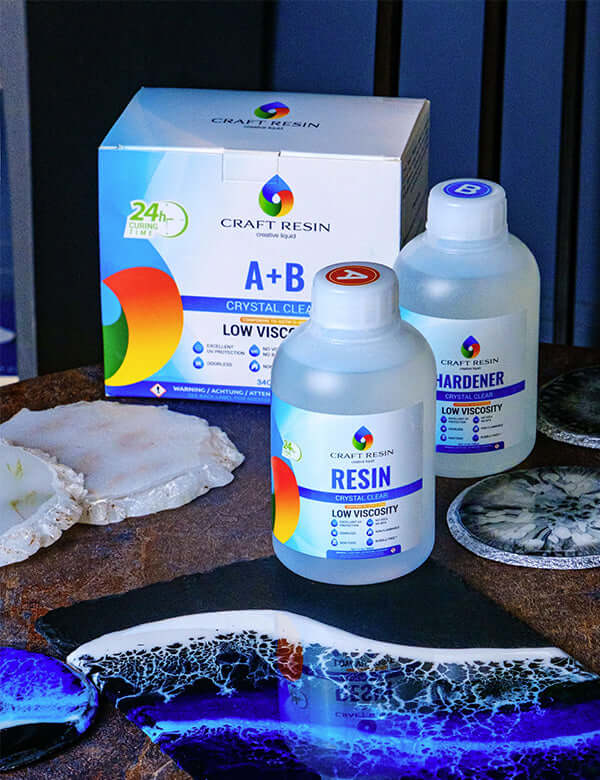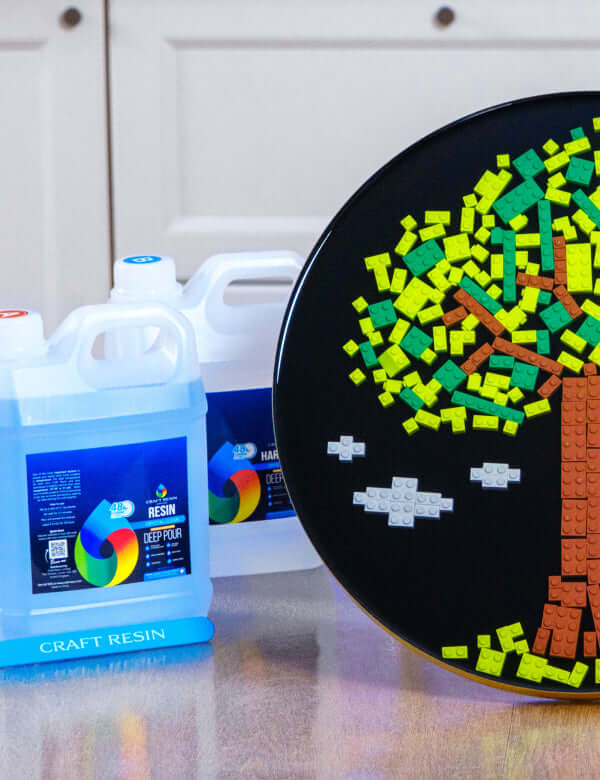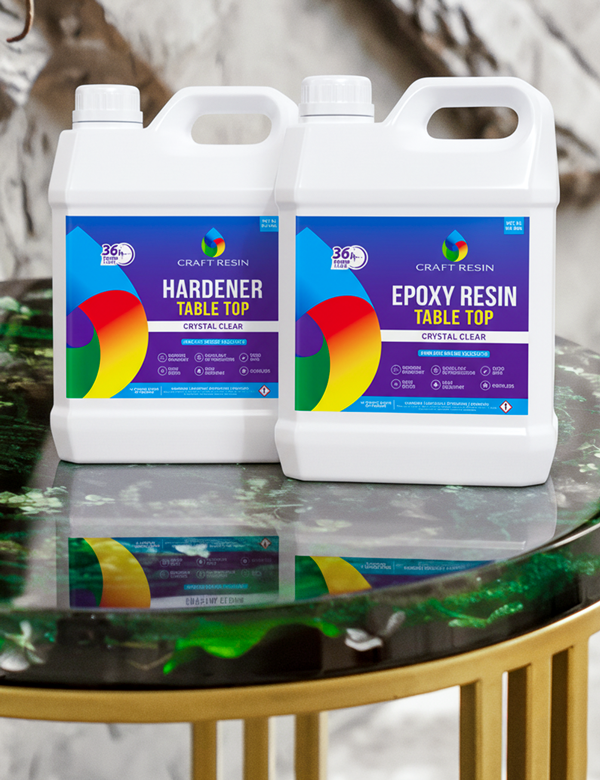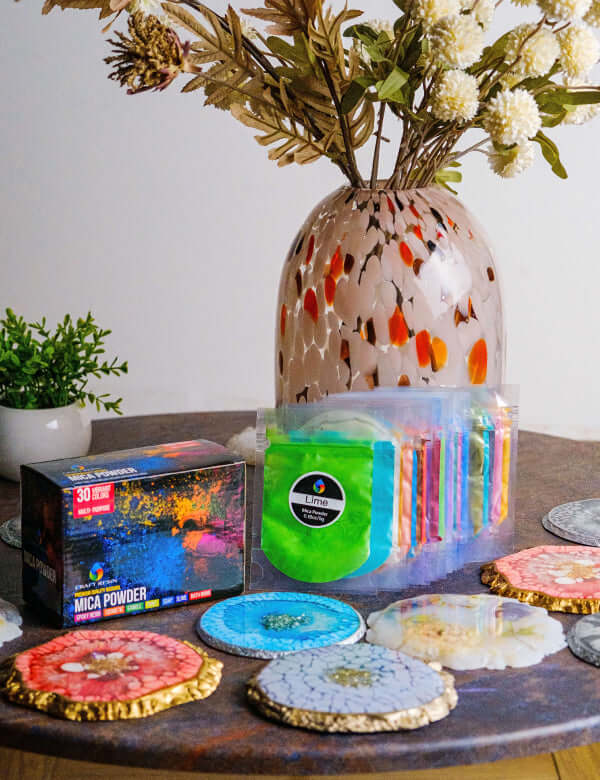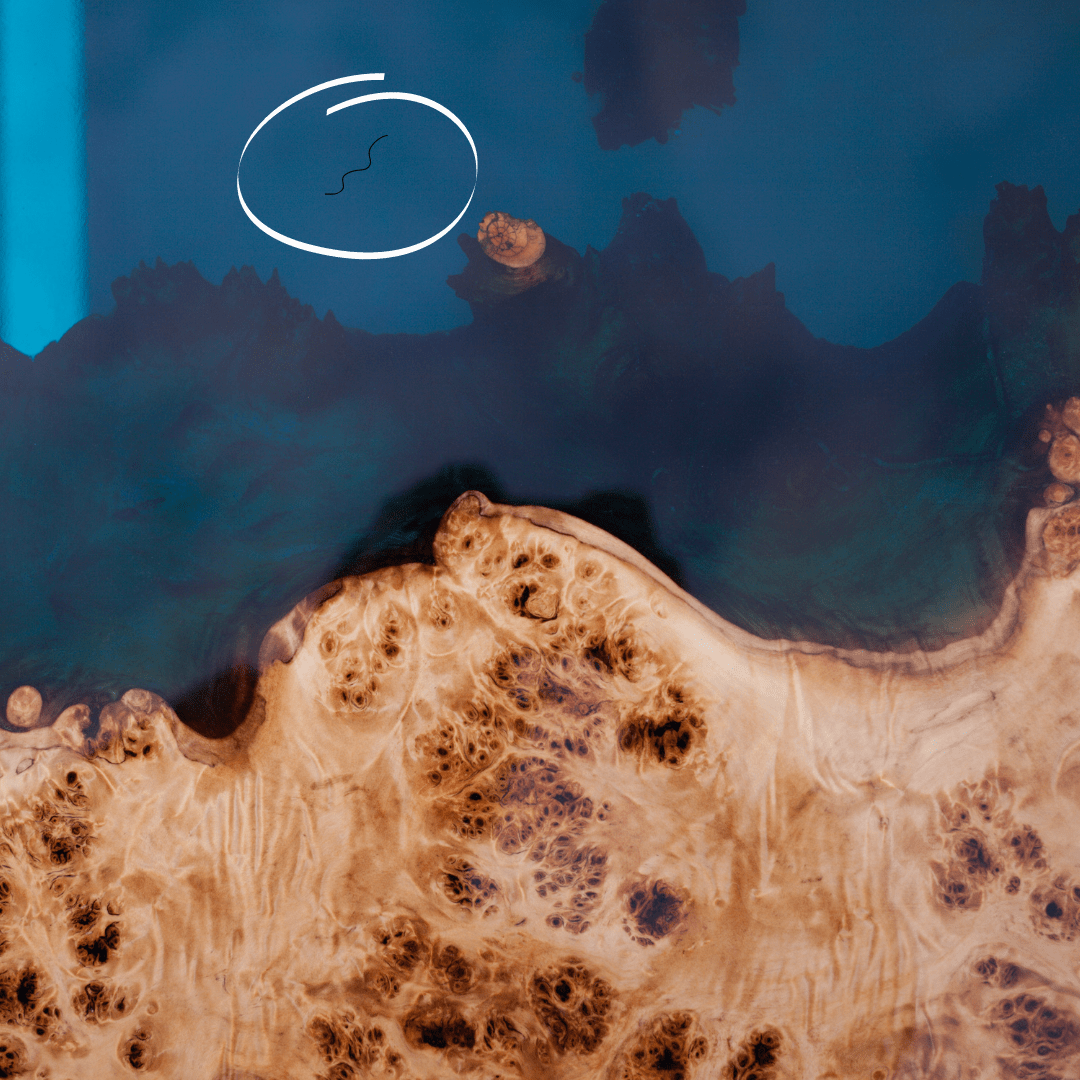We’ve covered the topic of using resin in warm/hot temperatures before, but now we’re moving towards cooler temperatures in the UK again, we’d like to switch it up and draw your awareness about working with resin in cooler temperatures.

Temperature is one of the most important factors to keep your eye on when working with Craft Resin, having the wrong temperatures in your working environment as well as your resin can create all kinds of issues with your resin projects.
The best temperature to ensure your workspace is between when work with Craft Resin is 21-24C or 70-75F.
This needs to be kept consistent while working with your resin and during the curing process. If the temperature is below these figures then your projects may not cure, or if they do they may cure with imperfections on them. So during the winter months especially, you need to take extra precautions to keep your workspaces temperature just right.
To start there are three things you can do to ensure your work cures in the colder months:
1 - Make sure your resin is between 21-24C or 70-75F, if it’s stored in a cooler area, put the unopened bottles in a warm sink of water before measuring and then mixing, or place them next to a radiator for a few hours before you measure and mix.
2 - You must make sure your workspace is kept between 21-24C or 70-75F, measure the temperature at all times to ensure it is kept between these levels.
3 - Make sure your workspace and curing area stays between these temperatures for the initial 24 hours of curing, do not let these temperatures dip, and pay attention to this if you are leaving your work to cure overnight.

Let’s look into these in more detail:
1 - Make sure your resin is between 21-24C or 70-75F.
Between these temperatures, Craft Resin is completely clear and has a smooth consistency, it’s very easy to move around and makes pouring a dream. When its cold this creates lots of tiny micro-bubbles which can make the resin look misty or murky.
If you want clear, glass like projects then you will need to ensure your resin mix is warm so that these do not appear, you won’t be able to get them out once your project has been poured, unlike larger surface bubbles that can appear, but are easy to get rid of with a heat torch.
Colder resin is more difficult to use, it’s thicker, harder to spread out and doesn’t usually self level either which will leave your project with things like a ripple effect on the surface, or uneven patches and holes of resin in your work.
To warm your resin/hardener up so that these issues don’t occur simply place them next to a radiator for a few hours before use, or place them in a sink of warm water. Please leave the lids on if you use this method, any moisture that gets into your bottles can cause issues, leaving the lids on and filling the sink below lid level will stop this from happening.
The temperature of the water shouldn’t be boiling, warm water will do, and then leave them to sit for about 10-15 minutes, depending on how warm your water is. You might want to experiment to get the perfect water temperature and length of time for yourself.
Make sure you dry the bottles with a towel after they have been in the water. If you don’t water can get into the bottles when you open the lids.
You can then measure and pour your resin after this step, however also make sure that your molds/artwork has been resting in the warmer room for a couple of hours before you do pour the warmed resin into them. If your mold/substrate is then cold and warm resin is poured onto it, this can cause a temperature shock issue, and again issues like rippling can occur.

2 - Make sure your work area is also between 21-24C or 70-75F.
There is no point in having your resin all warm and working perfectly, but then you-our and leave it to cure in a colder room, issues will occur.
You need to ensure your work area has a thermometer in it and that the room is kept to between 21-24C or 70-75F at all times. We realise this can be difficult to do, especially when working with resin in your own homes, however this is such an important step that you do need to ensure the temperature is just right.
If you can use a separate room to resin in, and then can control the temperature in that room, that is perfect. You can use a plug in heater in that room, or if it has its own temperature controls use these.
Make sure that if there are any windows in the room, that during the winter months there are no drafts flowing from them, and that if there are, the temperature can still be kept in line the guidelines and your working table, and curing area isn’t kept in this draft flow.
When you are ensuring your working environment is between these temperatures it’s also worth noting, and keeping an eye on the humidity in the room too. Any humidity, or moisture that gets into the resin mix or your curing project can cause issues. The dryer you can get your room the better, but anything under 75% humidity should be ok, if you can get it lower still, then great. Sometimes a dehumidifier can help.
If you leave your resin in a room that is these temperatures for the full 24 hours and you find it is still not curing, then temperature might not be the issue, it’s more likely to be an issue with how you have measured the resin/hardener or how you have mixed and then poured it.
Please refer back to our recommended technique to ensure you are following these guidelines to the letter. Every brands resin is formulated differently and therefore needs slightly different techniques to ensure it works well, so if you have switched from a different brand, you might need to change your techniques, even though you are a more experienced resin artist.

3 - Make sure your working area, and curing area stays between 21-24C or 70-75F during the first 24 hours.
During the curing phase it is essential that you keep your room between these temperature guidelines with no fluctuations below these.
If you are stabilising your temperature during the day, but then at night your temperature dips below this, then issues can occur. Issues such as rippling, or dimples in the resin project can be a sign that the temperature has dipped during the curing process.
It can be difficult to regulate the temperature for the entire 24 hours, we understand this, but it is essential that you do in order for your resin projects to go well.

When it comes to storing Craft Resin it’s best if you can store them in a warm room that is kept stable. It doesn’t have to be quite as warm as the room you are working on the resin in, but it’s has to be only just below this temperature and make sure the bottles are also kept out of direct sunlight, a shady spot is best.
If you are working with Craft Resin in a warmer location, please check out our Blog about working with Craft Resin in warmer weather.
If you have any of your own tips about how you best work with Craft Resin during the colder months, please pop them below in the comments so others can learn from them.
Team Craft Resin

